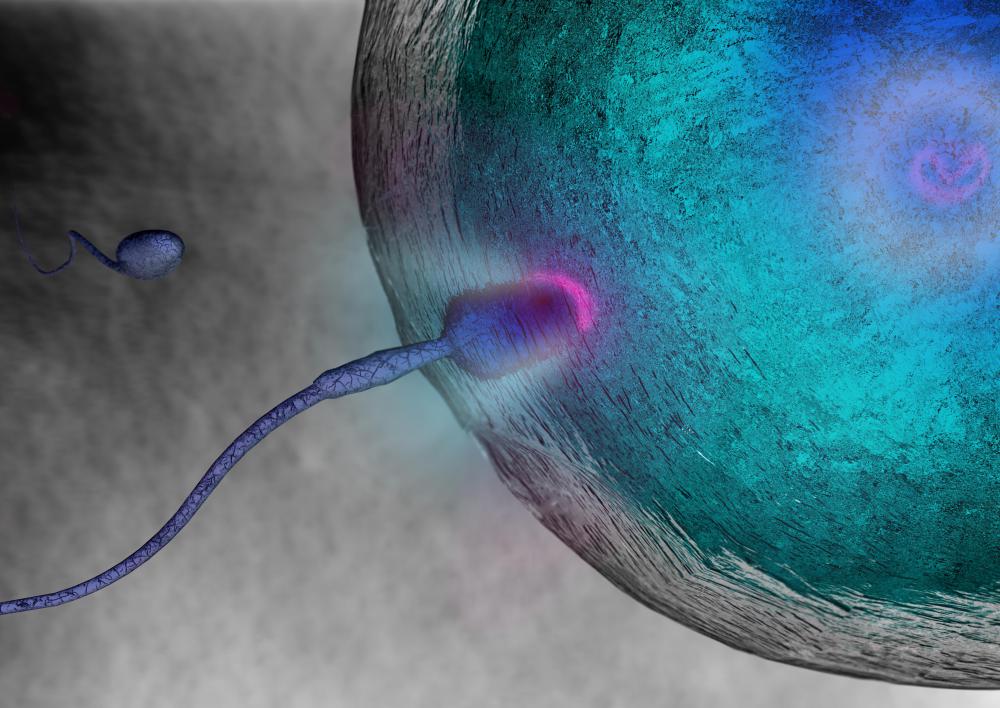At WiseGEEK, we're committed to delivering accurate, trustworthy information. Our expert-authored content is rigorously fact-checked and sourced from credible authorities. Discover how we uphold the highest standards in providing you with reliable knowledge.
What are my Options After Ectopic Pregnancy?
After ectopic pregnancy, a woman has two options for becoming pregnant in the future: in vitro fertilization (IVF) and high-risk normal conception, depending on whether fallopian tubes remain intact. If carrying a baby in her own uterus and giving live birth are not absolute desires for the prospective mother, other options exist, such as adoption and surrogate pregnancy, during which her fertilized egg can be incubated in the womb of another woman. Doctors typically encourage a woman to wait six months to a year after an ectopic pregnancy to pursue motherhood again due to residual physical and psychological trauma.
Normal conception after ectopic pregnancy is difficult and risky, but still possible, even if the woman has just one functioning fallopian tube. The risk exists because most obstetricians report that once a woman has an initial ectopic gestation, she has a greater risk of having subsequent ones. Also, the woman has a high chance of becoming infertile after having an ectopic pregnancy due to scarring or removal of fallopian tubes that may have been damaged as a result of ectopic pregnancy or related tubal surgery. Pelvic inflammatory disease also afflicts roughly 60 percent of women after ectopic pregnancy, according to medical reports.

During an ectopic gestation, a fertilized egg does not move fast enough through the fallopian tubes to make it to the uterus before implantation. Instead, the egg implants itself outside the uterus, generally in or on top of a fallopian tube, in the cervix, or in an ovary. Such improvised implantation generally means certain death for the zygote, since only the uterus creates the proper soft, nutritive lining in which a zygote can flourish. The uterus is also the only location that provides the right conditions for the protective amniotic sac to form around the expanding embryo.

The zygote either dies on its own or has to be surgically removed, often with the fallopian tube to which it is attached. If the zygote grows for weeks inside a fallopian tube before the woman discerns she is pregnant, it can burst the tube and cause shock along with life-threatening hemorrhaging for the woman. To lower the risk of internal bleeding, women who have had prior ectopic pregnancies are encouraged by doctors to receive ultrasounds as soon as a missed period or the presence of human chorionic gonadotropin (HCG) pregnancy hormones indicates possible conception. An ultrasound will confirm whether a fertilized egg exists and if it has implanted in the right location. If so, the pregnancy should generally proceed as normal.

If eggs consistently fail to become fertilized after ectopic pregnancy, a woman can use fertility drugs to aid egg production and conception. This is accompanied by a risk of multiple births. In vitro fertilization solves both the problem of fertilization and the problem of improper implantation. During an IVF procedure, the ovaries are stimulated to produce eggs that are then fertilized with sperm in a laboratory before being directly planted into the uterus by a surgeon. If a woman has no functioning fallopian tubes after an ectopic pregnancy, in vitro fertilization can still be effective.
AS FEATURED ON:
AS FEATURED ON:















Discussion Comments
Someone I know had ovarian cancer and her uterus was removed. She had a tubal pregnancy. My question is can the tubal fetus be removed and implanted in a surrogate mother? If they can grow a fetus in a petri dish, why can't science do this?
Post your comments